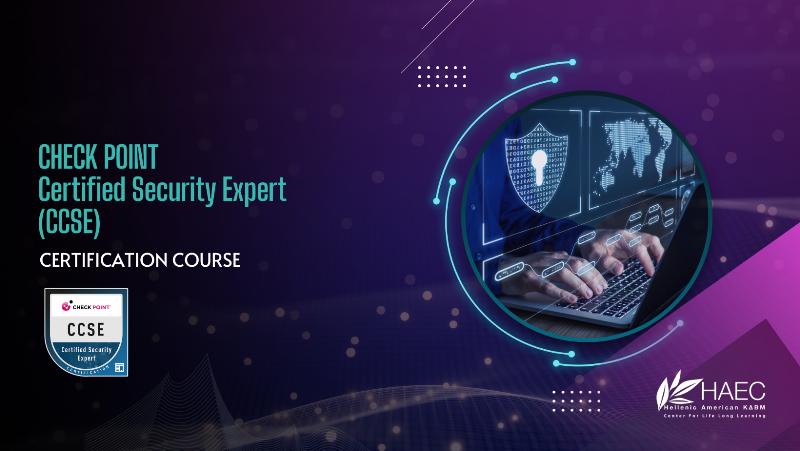
- Download CCSE Data Sheet (in .pdf format)
Check Point Next Generation Firewalls and cloud security software are renowned for their robust security and reliability. In this comprehensive course, you will learn how to configure, deploy, and troubleshoot firewalls easily, maximizing your security and ensuring seamless operations. The course covers everything you need to know about firewall processes, including risk management, user and kernel processing, stateful inspection, and VPNs. With hands-on labs, you can put your newly acquired knowledge into practice, solidifying your understanding and skills.
CCSE has become almost an industry standard for internet security. The CCSE certification recognizes and proves an individual’s expertise in deploying, managing, and troubleshooting Check Point security as the ability to control firewalls, VPNs, and security management, to support RISK management services. The certification is intended for security professionals with at least 2-3 years of experience working with Check Point technologies. To obtain the CCSE certification, individuals must pass a written exam and complete a hands-on practical exam.
Description
In this course, you will learn how to effectively build, modify, deploy, and troubleshoot Check Point Security systems on the GAiA OS. You will study firewall processes and examine user and kernel processing and stateful inspection. Labs include configuring security gateways, implementing VPNs, and performing advanced troubleshooting tasks on the firewall.
Objectives
Upon completion of this course, students will be able to:
- Identify basic interfaces used to manage the Check Point environment.
- Identify the types of technologies that Check Point supports for automation.
- Explain the purpose of the Check Management High Availability (HA) deployment.
- Identify the workflow followed to deploy a Primary and solution Secondary servers.
- Explain the basic concepts of Clustering and ClusterXL, including protocols, synchronization, connection stickiness.
- Identify how to exclude services from synchronizing or delaying synchronization.
- Explain the policy installation flow.
- Explain the purpose of dynamic objects, updatable objects, and network feeds.
- Understand how to manage user access for internal and external users.
- Describe the Identity Awareness components and configurations.
- Describe different Check Point Threat Prevention solutions.
- Articulate how the Intrusion Prevention System is configured.
- Obtain knowledge about Check Point’s IoT Protect.
- Explain the purpose of Domain-based VPNs.
- Describe situations where externally managed certificate authentication is used.
- Describe how client security can be provided by Remote Access.
- Discuss the Mobile Access Software Blade.
- Explain how to determine if the configuration is compliant with the best practices.
- Define performance tuning solutions and basic configuration workflow.
- Identify supported upgrade and migration methods and procedures for Security Management Servers and dedicated Log and SmartEvent Servers.
- Identify supported upgrade methods and procedures for Security Gateways.
Information
| Instruction Languages | EL, EN |
| Prerequisites | CCSA Training or Certification, fundamental Unix and Windows knowledge, certificate management experience, system administration and networking knowledge |
| Who should attend | Technical Professionals who architect, upgrade, maintain, and support Check Point products |
| Certificate of Attendance | YES |
| Certification Track | Check Point exam #156-315.81.20 - CCSE (Pearson VUE Testing) |
| Offered Online | YES |
| Partner Institution | Check Point |
Schedules
| Days and Hours | Start Date | End Date | Hours per Week |
|---|---|---|---|
| To be announced | - | - | - |